Contents
The lead-gray powder has the shape of a ball. White when young. When ripe, it becomes grey. The fruiting body is small. The fungus was first identified by mycologist Christian Heinrich Person. It was he who, in his 1795 work, gave the mushroom the Latin name Bovista plumbea.
In scientific works, there are also designations:
- Bovista ovalispora;
- Calvatia bovista;
- Lycoperdon bovista;
- Lycoperdon lead.
The most common name for this variety in is Porkhovka lead-gray. There are others: Devil’s (Grandfather’s) tobacco, Lead raincoat.
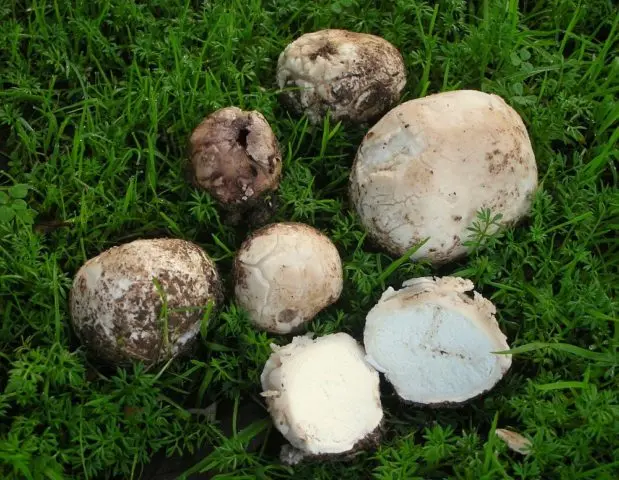
Where do the lead-gray flies grow
They are warm-hearted. Grow from early summer to autumn. Prefer areas with sparse grass. Places of growth:
- lawns;
- parks;
- meadows;
- roadsides;
- embankments;
- sandy soil.
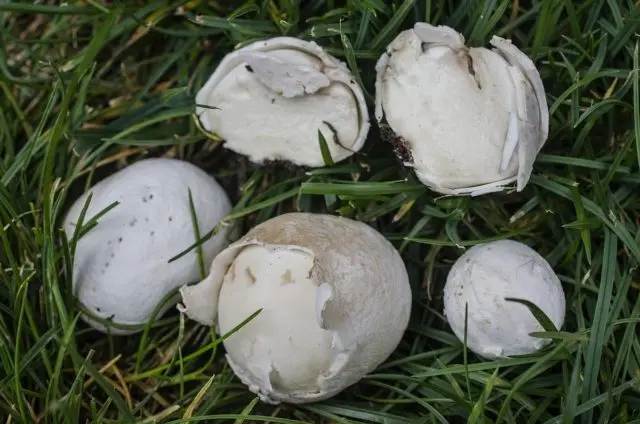
What do lead-gray powder coats look like?
Fruit bodies are round. They are small in size (1-3,5 cm in diameter). The leg of the lead-gray powder is absent. The spherical body goes directly into the root system. It consists of thin mycelium. Grow in groups.

First white (both inside and outside). Over time, lead-gray fluff acquires a yellow tint. At maturity, the color varies from grayish brown to olive brown. The pulp is snow-white, elastic. Then it becomes gray or black-green, as it is filled with ripe spores. There may be over a million. Stepping on an adult, darkened raincoat, a cloud of dust appears.
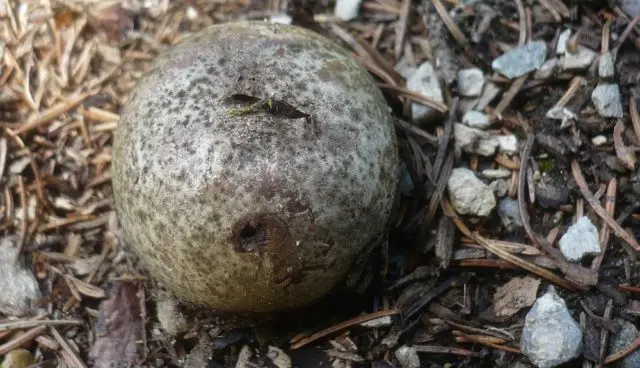
The spore print is brown. The seed powder exits through an apical pore that forms at the top of the fungus.
Is it possible to eat lead-gray powder
Lead-gray powder is an edible mushroom. It can only be eaten at a young age, when the flesh is completely white.
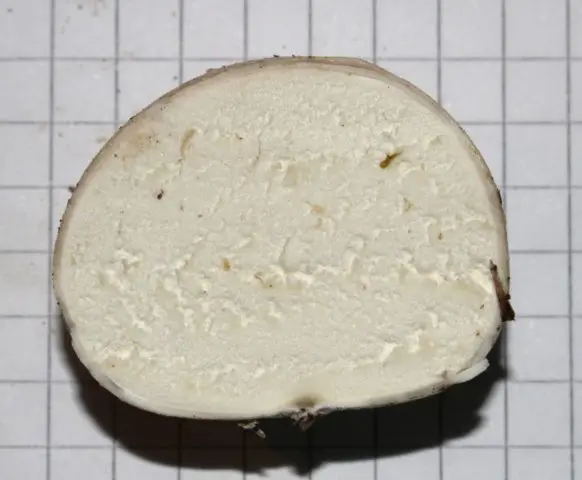
The taste of the mushroom
The taste of lead-gray powder is rather weak. Some people don’t feel it at all. The smell is pleasant, but barely perceptible.
This variety is classified as type 4 in a big way due to its very small size. Such mushrooms are recommended to be eaten as a last resort, when there are no alternatives. Category 4 also includes russula, oyster mushrooms, dung beetles.
Benefits and harm to the body
Lead-gray powder is not in demand among mushroom pickers, although it quite well improves immunity and strengthens the cardiovascular system. Based on it, doctors make anti-cancer drugs.
It contains the following minerals:
- potassium;
- calcium;
- phosphorus;
- sodium;
- iron.
It has the ability to absorb heavy metals and other toxic substances. Once in the body, the fungus absorbs harmful elements, then removes them.
But the ability to absorb substances from the environment can be harmful. The fungus absorbs toxic components from the soil, accumulates them in the tissues, and when it enters the human body, it releases them. Therefore, lead-gray powder can not be collected along roadsides and in ecologically unfavorable areas.
False doubles
This mushroom can be confused with other raincoats. For example, with Vascellum field. It differs from the lead-gray powder by the presence of a small stem and a diaphragm that separates the spore-bearing part.
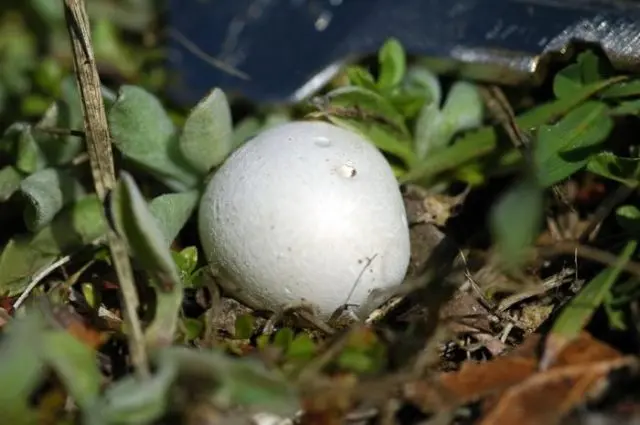
Possible confusion with neighboring species is fairly harmless. But there is a mushroom that, when young, looks like lead-gray fluff. This is a pale bastard. It is very dangerous – 20 g is enough to cause death.
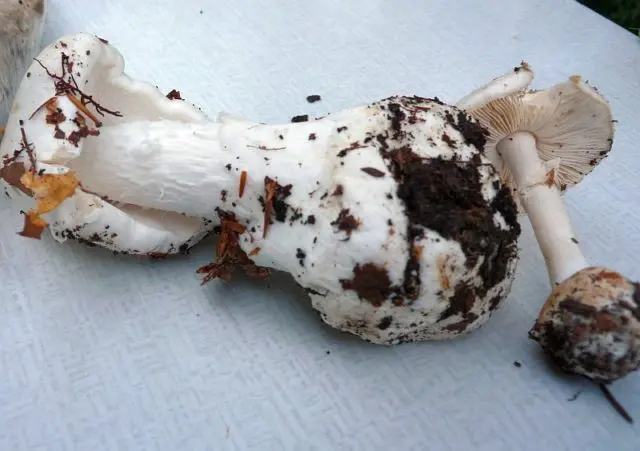
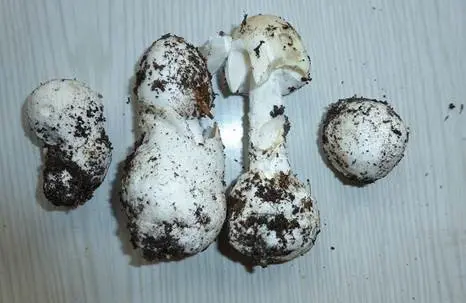
At an early age, the mushroom also has an ovoid rounded shape, but is wrapped in a film. Pale grebe is distinguished by a sweetish, unpleasant odor, the presence of a leg. Her fruiting body is rounded, but not as fused as that of a fluff. The spore print is white.

Collection rules
Only young mushrooms should be collected. They should not have dark spots. Pigmented areas on the fruiting body indicate the beginning of the formation of spores and the loss of nutritional properties and taste.
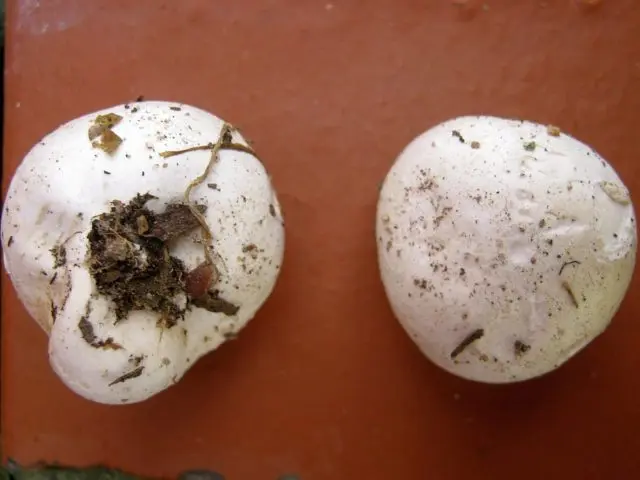
Use
Porkhovka lead-gray contains 100 kcal per 27 g. Rich in protein (17,2 g). It is fried, stewed, marinated, salted, added to soups and stews.
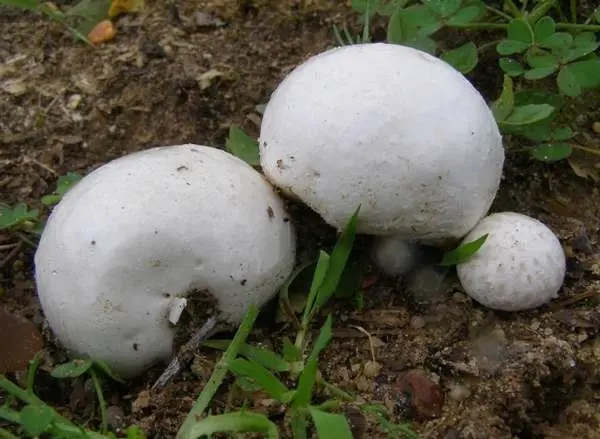
Conclusion
Lead-gray powder is an excellent food product, as it is saturated with trace elements. It is very beneficial for health due to its absorbent properties. And despite belonging to the 4th category of edibility, it is tasty and nutritious. It is important not to confuse it with a pale grebe.









